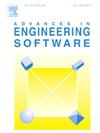Segmentation-assisted classification model with convolutional neural network for weld defect detection
IF 5.7
2区 工程技术
Q2 COMPUTER SCIENCE, INTERDISCIPLINARY APPLICATIONS
引用次数: 0
Abstract
Detecting weld defects in battery trays is crucial for the safety of new energy vehicles. Existing methods for weld surface defect detection, relying on traditional computer vision algorithms and convolutional neural networks with substantial image-level labeled data, face challenges in accurately identifying small defects, especially with limited samples. To address these issues, we developed an innovative Segmentation-Assisted Classification with Convolutional Neural Networks (SACNN) model. SACNN integrates a common feature extraction subnet, a segmentation subnet enhanced by a multi-scale feature fusion module, and a classification subnet specifically designed for precise defect detection. A joint loss function co-trains the segmentation and classification subnets using both image-level and pixel-level labels, enhancing the model’s ability to accurately detect small defect regions. Our model demonstrates notable improvement, achieving accuracy gains ranging from 2% to 18% compared to existing state-of-the-art methods, with an overall accuracy of 94.09% on an industrial dataset of battery tray welds. To further evaluate the generalization capability of our model, we evaluated it on the publicly available Magnetic Tile dataset, achieving state-of-the-art results in this challenging context. Additionally, we conducted comprehensive ablation studies to validate the contribution of each component in our approach and utilized visualization techniques to enhance the interpretability of our model. These advancements represent a significant contribution to the state of the art in aluminum alloy weld defect detection.
用于焊接缺陷检测的卷积神经网络分割辅助分类模型
检测电池托盘的焊接缺陷对新能源汽车的安全至关重要。现有的焊接表面缺陷检测方法依赖于传统的计算机视觉算法和卷积神经网络以及大量图像级标记数据,在准确识别小缺陷方面面临挑战,尤其是在样本有限的情况下。为了解决这些问题,我们开发了一种创新的卷积神经网络分割辅助分类(SACNN)模型。SACNN 集成了一个通用特征提取子网、一个由多尺度特征融合模块增强的分割子网和一个专为精确缺陷检测而设计的分类子网。联合损失函数使用图像级和像素级标签对分割子网和分类子网进行联合训练,增强了模型精确检测小缺陷区域的能力。与现有的先进方法相比,我们的模型取得了显著的进步,准确率提高了 2% 到 18%,在电池托盘焊接的工业数据集上的总体准确率达到 94.09%。为了进一步评估模型的泛化能力,我们在公开的磁瓦数据集上对其进行了评估,并在这一具有挑战性的环境中取得了最先进的结果。此外,我们还进行了全面的烧蚀研究,以验证我们方法中每个组件的贡献,并利用可视化技术提高模型的可解释性。这些进步是对铝合金焊接缺陷检测技术的重大贡献。
本文章由计算机程序翻译,如有差异,请以英文原文为准。
求助全文
约1分钟内获得全文
求助全文
来源期刊

Advances in Engineering Software
工程技术-计算机:跨学科应用
CiteScore
7.70
自引率
4.20%
发文量
169
审稿时长
37 days
期刊介绍:
The objective of this journal is to communicate recent and projected advances in computer-based engineering techniques. The fields covered include mechanical, aerospace, civil and environmental engineering, with an emphasis on research and development leading to practical problem-solving.
The scope of the journal includes:
• Innovative computational strategies and numerical algorithms for large-scale engineering problems
• Analysis and simulation techniques and systems
• Model and mesh generation
• Control of the accuracy, stability and efficiency of computational process
• Exploitation of new computing environments (eg distributed hetergeneous and collaborative computing)
• Advanced visualization techniques, virtual environments and prototyping
• Applications of AI, knowledge-based systems, computational intelligence, including fuzzy logic, neural networks and evolutionary computations
• Application of object-oriented technology to engineering problems
• Intelligent human computer interfaces
• Design automation, multidisciplinary design and optimization
• CAD, CAE and integrated process and product development systems
• Quality and reliability.
 求助内容:
求助内容: 应助结果提醒方式:
应助结果提醒方式:


